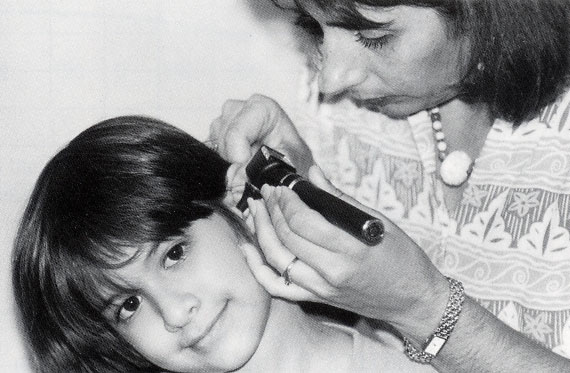Suggested Procedure

- Be sure to select the correct “tip” (speculum) to fit the patient’s ear.
- Turn on the light.
- Hold the back of the ear with one hand and gently introduce the otoscope into the ear canal.
- Place your eye next to the viewing end of the scope
- Continue to move the scope and the ear gently and look until you see the ear drum. The drum can and will have a variety of appearances.
NOTE: Please refer to the pictures that accompany the description of the normal ear. Being thoroughly familiar with the normal ear allows one to recognize what is abnormal.
Please remember that infants need some special handling because their ears have a little different configuration. The infant’s ear may need to be pulled straight back (i.e., it needs to be pulled posteriorly or toward the back of the head); while the ear on older children or adults is usually pulled both back and upwards.
To hold the otoscope properly, grasp the unit at the handle with an outstretched pinky finger. When the otoscope is placed in the ear canal the pinky finger rests on the cheek of the patient. This procedure will help keep the otoscope from going to far into the ear canal, and if the patient turns his head, your hand and the otoscope will move with the head preventing the otoscope from being forced into the ear.
WARNING: Children tend to turn their head toward you to see what is going on. Unless the otoscope is being held properly so that it can move with the head, the ear canal can be injured.